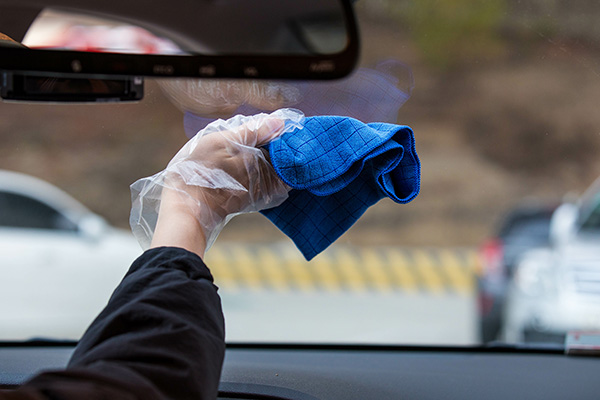
You clean your windshield regularly, but there’s still a hazy, greasy film that builds up on the inside—especially when the sun hits it just right. It’s not just annoying; it can make it harder to see clearly. So what’s causing this mystery film, and why does it keep coming back?
That oily residue isn’t just leftover smudges—it’s often the result of your car’s own materials slowly releasing chemicals into the air. Over time, those chemicals settle on the glass, leaving behind a streaky or foggy layer that’s tough to wipe off.
Where the Oily Film Comes From
The main culprit behind that interior windshield haze is something called off-gassing. This happens when the plastics and vinyl inside your car—especially the dashboard and trim—release chemical vapors over time, particularly when the car heats up. Those vapors rise, hit the cooler glass, and condense into a thin, oily layer.
This process is more noticeable in newer cars or vehicles that sit in direct sunlight often since heat speeds up the release of these vapors. It’s also more common if you use dashboard protectants or cleaning sprays that contain silicone or oil-based ingredients. These products might leave a shine, but they can add to the film problem without you realizing it.
Can It Be Coming From Something Else
In some cases, the film can be worsened by a different issue: a coolant leak from the heater core. If you notice the film is sticky, has a sweet smell, or keeps returning quickly even after cleaning, coolant vapor might be leaking into the cabin and condensing on the glass.
That’s a much more serious issue than basic off-gassing. A leaking heater core not only fogs up the windshield—it can also cause health concerns from inhaling coolant fumes and lead to engine cooling problems if left unaddressed.
Other contributors to interior film buildup include:
- Cigarette or vape smoke
- Air fresheners that contain oil
- Interior detailing products
- Dirty cabin air filters
Even your breath, combined with humidity and dust, can add to windshield haze over time. But if the film looks greasy or is hard to remove, the most likely source is chemical vapor buildup or a cooling system issue.
How to Clean the Windshield Properly
Wiping the glass with a dry paper towel won’t cut it. In fact, it often just smears the film around and makes visibility worse. To clean the inside of your windshield effectively, use a glass cleaner specifically made for automotive interiors, or mix a solution of water, alcohol, and vinegar for a residue-free result.
Use a microfiber cloth and wipe in circular motions to lift the film off the glass completely. If the film returns quickly, it’s worth scheduling an inspection to rule out a coolant leak or ventilation issue.
Also, avoid using household glass cleaners that contain ammonia—these can damage interior surfaces and aren’t ideal for tinted windows.
How to Prevent It From Coming Back
If off-gassing is the source, you can slow it down by using a windshield sunshade, parking in the shade, and keeping the interior as cool as possible. You should also avoid applying silicone-heavy sprays or dashboard glosses that can vaporize when heated.
Replacing your cabin air filter regularly (about once a year or every 12,000–15,000 miles) helps reduce particles and vapors circulating through your vents and landing on the windshield.
And if there’s any suspicion of coolant vapor—especially if you’ve also noticed low coolant levels, sweet smells, or unexplained fogging—it’s time to have the heater core checked professionally.
Whether it’s a simple fix or something deeper in the HVAC system, trust Jeff’s Automotive in Easton, PA, to keep your car clean, safe, and easy to see out of—rain or shine.